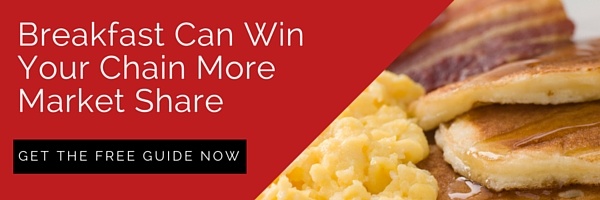
The QSR industry can be pretty cutthroat.
Consumers are spoiled for choice, but they have a finite amount of time and money. What makes eaters choose this restaurant and not that? What makes them choose fast food over grocery grab-and-go items, sit-down casual or staying in and eating at home? Moreover, what keeps a fast food restaurant ahead of its competitors? Cost margins are too tight to allow much room for error. And consumer taste preferences are ever-shifting, so robust marketing and R&D strategies are a must.
Today, let’s take a look at 3 characteristics that can spell the difference between success and failure in the QSR industry.
1. You need a menu that offers a balance of value and quality.
For the better part of a decade now, fast casual challengers — led by brands like Panera and Chipotle — hammered on fast food companies’ market share. Using simple menus, organic, cruelty-free and non-GMO ingredients, these competitors have capitalized on consumer burnout on traditional fast food “burger-and-fry” offerings. But now, there are indications that consumers are becoming burned out on fast casual concepts.
Sales over the past year have slumped — mightily for some brands— at formerly impervious fast casual giants. Even new marketing and promotions haven’t helped fast casual brands recoup market share lost to fast food competitors. Why? It may be because, over the course of its history, once a fast casual finds a formula that works, most restaurants rarely change, or add to, their menus.
Consumers are always looking for new tastes to excite their palettes. Fast food restaurants should to take that into account and keep adapting their menus to capitalize on ever-shifting consumer preferences. They should also be careful not to repeat past QSR industry mistakes. One of the biggest catalysts of the rise of fast casual was consumer frustration with low-quality ingredients and corner cutting at some chains.
When Chipotle and restaurants like it came along promising higher quality, fresher, healthier dishes, consumers flocked. The growing consumer demand for quality ingredients isn’t a trend — it’s a long-term movement. But the desire for quality is weighted by a demand for value, and the QSR industry is finding its niche in balancing the two. Fast casual restaurants tend to be more expensive than traditional QSR outlets — even with the added cost of improving the quality of fast food ingredients. This has allowed QSR chains to make steady gains in market share, including a 5% jump in the second quarter of 2016.
Keep close tabs on consumers’ perceptions of how your restaurant chain’s value stacks up against your competition.
2. You need an agile supply chain.
Part and parcel with the needs to preserve value and offer fresh, healthy ingredients, your company needs a supply chain that can keep your outlets supplied with the ingredients consumers demand, insulate you from supply shocks and keep your costs low.
Rising commodity and labor costs will always threaten to undercut profits. And, although fuel prices have fallen in recent years (following over a decade of sustained growth), energy costs are projected to grow over the long term as the world population grows.
A well-developed logistical capability and mature supplier network can help to keep those costs from undercutting your company’s competitive advantages.
A 2015 survey of the United States food logistics industry conducted by HAVI Global Solutions and Technomic, Inc., found that “foodservice companies with more mature supply chains tend to have greater topline performance,” reported Food Logistics contributor Elliot Maras. But, he noted, “While this finding won’t surprise anyone, it comes with a caveat.”
“Younger chains, many of them in the fast-casual sector, are among the fastest growing despite having lesser supply chain capabilities. This is because consumer demand for their offerings is so strong,” Maras wrote.
In other words, QSR companies should strive to strike a nice balance between traditional suppliers with strong buying power and startup suppliers that can offer novel ingredients that attract and hold consumer attention.
3. You should always be looking for ways to improve and augment the customer experience.
That means you need to keep your eyes and ears on what your customers are saying.
Monitor social media platforms and use them to engage your core consumers. Collect consumer data, analyze it and learn from it. And employ those learnings when you develop new menu items and marketing strategies.
A case in point for successful QSR consumer engagement might be McDonald’s.
Following years of market share lost to fast casual, the chain listened to its customers and implemented all-day breakfast, bringing some of its traditional hottest sellers (Egg McMuffins, for example) into higher-volume dayparts. Now, breakfast items account for 25% of all McDonald’s sales and have driven a strong recovery for the brand.
Offering more menu variety isn’t just limited to offering more items, either. The QSR industry could take a page from fast casual and allow consumers more customization of existing menu items.
Just as a consumer can walk into a Chipotle or Panera and order the same menu item prepared a multitude of ways, fast food restaurants that offer premium toppings, an ever-changing selection of sauces or sides and limited-time-only specials could raise their profiles in consumers’ eyes, keep them competitive and help them garner more market share.






